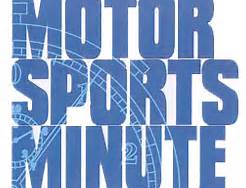IndyCar Series Schedule Shifts To Ovals, For Now
- Updated: April 27, 2010
Just a few thoughts and observations on the 2010 IZOD Indycar Series schedule as the series completes the first portion of the schedule and heads to the oval at Kansas Speedway and then on to the Indianapolis 500.
The series schedule has four distinct parts. Its starts with four street /road course races, then moves to four oval track races. After that, the cars return to the street/road courses for another five races and finish with four races on ovals.
I’m not sure why the schedule was set up this way, but it seems to potentially make for a frustrating season for both the teams and fans. Some teams excel on one type of track or the other, while many fans prefer the racing on one type of track to the other.
With the grouping of the races, a fan has to endure several weeks of one type of racing to get to the other, potentially losing fans when the series is on the opposite type of course to the one they prefer. With a mix during the season, fans could probably handle one or two of their least favorite type of course without losing interest, but four or five in a row might cause fans to look at other types of racing rather than Indycar. This is definitely not what the series needs to build a significant fan base.
The IZOD Indycar Series appears to have acknowledged the superiority of some drivers and teams on one type of course or the other as they announced on April 27, beginning this year, and retroactive to the first four races, there will be separate series titles for the street/road course races and for the oval races, as well as an overall series champion.
I can’t help but wonder if this was implemented at this late date because others have felt the same way I have; with four road/street course races opening the season, it might have given an unfair advantage to the road/street course specialists as they jumped ahead in the season-long point battle. It will be interesting at season’s end to see how the overall point battle shakes out and whether, in the long run, it favors the street/road course specialists or the oval specialists, or if it turns out to be relatively equal in the end.




![Porsche Fabcar crosses the finish line. [Robert Madara photo]](https://racingnation.com/wp-content/uploads/2023/11/FabcarFinish-108x70.jpeg)

![USF2000 Pro driver Lindsay Brewer. [Eddie LePine Photo]](https://racingnation.com/wp-content/uploads/2023/06/IMG_8825_2-108x70.jpg)